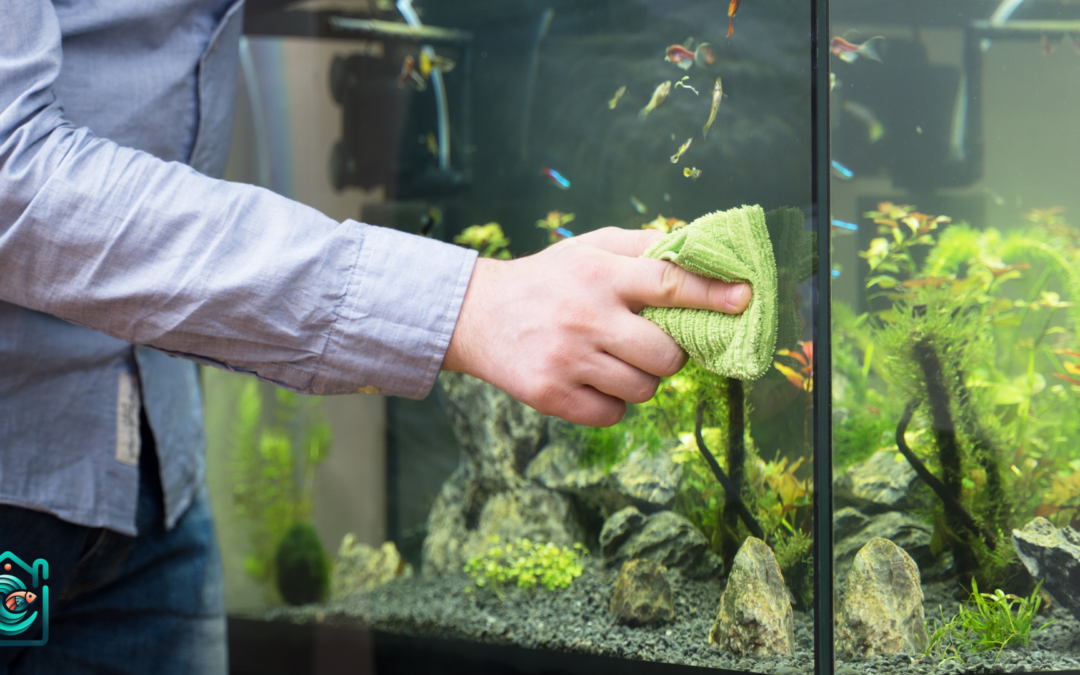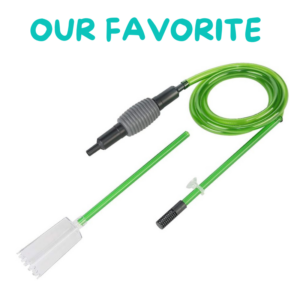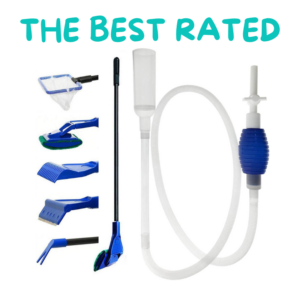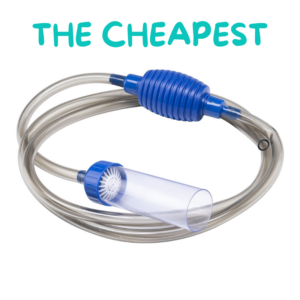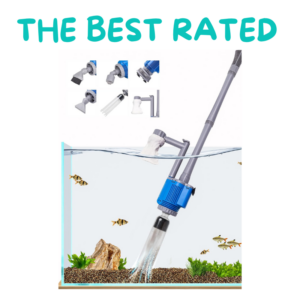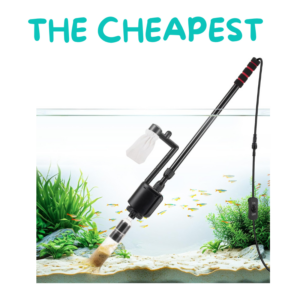An aquarium vacuum cleaner is a device used to clean the substrate (gravel or fine sand) in aquariums of all sizes. It helps remove debris, uneaten food, fish waste and other organic matter that accumulates at the bottom of the tank. This process is essential to maintain a healthy, clean environment for fish and other aquatic organisms living in the aquarium.
How does an aquarium vacuum cleaner work?
An aquarium vacuum cleaner generally consists of a siphon tube with a wide end and a narrower end, and a hose attached to it.
An aquarium vacuum cleaner has 2 ends.
One end is often wider than the other, allowing you to suck up waste embedded directly in the sand of your tank.
To start using an aquarium vacuum cleaner, immerse the wide end of the tube in water until it reaches the substrate. Then, once in place, you can either manually create suction by sucking on the narrow end of the tube until water begins to flow into the bucket. Or use a pump to initiate the siphoning process.
Some vacuum cleaners come with a hand pump for easy start-up. Simply press the pump several times to start the siphoning process, without having to suck up the water with your mouth.
As the water flows through the tube, it takes with it any debris or waste present in the substrate.
Why is it important to use an aquarium vacuum cleaner?
Cleaning is a tedious part of aquarium maintenance, but it’s essential for the well-being of your fish.
Without the use of a vacuum cleaner. The substrate is likely to be clogged with a lot of waste, which will pollute the water and increase the risk of nitrite or nitrate peaks.
It’s well known that these 2 elements can have serious consequences for your aquarium’s flora and fauna. That’s why it’s a good idea to invest in a good vacuum cleaner to avoid these problems.
Here are 3 reasons why you should use a vacuum cleaner every week for your aquarium maintenance.
Maintain water quality:
Accumulated debris and waste can release harmful substances into the water, such as ammonia and nitrites. These compounds are toxic to fish and other aquatic organisms, and can lead to poor water quality, stress and even death. By removing these substances, an aquarium vacuum cleaner helps maintain a healthy aquatic environment.
Prevent algae growth:
Organic matter deposited on the substrate can serve as a source of nutrients for algae. If left unchecked, algae can quickly proliferate and have a negative impact on aquarium aesthetics. By removing debris with an aquarium vacuum, you reduce the availability of nutrients for algae, which helps prevent excessive growth.
What’s more, excessive algae growth is one of the main reasons why aquarists give up their hobby. It would be a shame to stop this passion simply because of a lack of knowledge and a failure to invest in the right equipment, such as an aquarium vacuum cleaner.
Promote beneficial bacteria:
The substrate of an aquarium is home to beneficial bacteria that play a vital role in the nitrogen cycle. These bacteria convert harmful ammonia into less toxic compounds, such as nitrite and nitrate. By cleaning the substrate with an aquarium vacuum, you ensure that these bacteria have access to oxygen and nutrients, enabling them to thrive and maintain a stable nitrogen cycle.
How often should I use an aquarium vacuum cleaner?
Depending on the size of your aquarium, we recommend at least weekly maintenance. That’s right. It’s important to maintain very good water quality, and so is cleaning the bottom.
A weekly water change of around 15 to 20% will help maintain the balance of your parameters and avoid serious problems with your plants and fish.
It’s also important to point out that the smaller the aquarium, the more regular and precise the maintenance needs to be.
Indeed, small volumes leave no room for error, and any lack of maintenance can lead to real catastrophes.
Conversely, an aquarium with a volume of over 350l means that maintenance can be spaced out and carried out every 10 to 15 days.
How do I maintain and clean my aquarium vacuum cleaner?
We recommend that you clean it under running water after each use. This eliminates waste and increases efficiency with every use.
Vacuum cleaners may still be relatively simple products, but they don’t require expensive, time-consuming maintenance. That’s why many aquarists use them to maintain their tanks.
Is the aquarium vacuum safe for my fish and plants?
Using an aquarium vacuum cleaner is safe for your plants and fish.
However, we advise you to be careful not to have fish on the cleaning bell of your vacuum cleaner. In this case, small fish could be injured.
Plants. The only risk is that they may be uprooted by the vacuum cleaner.
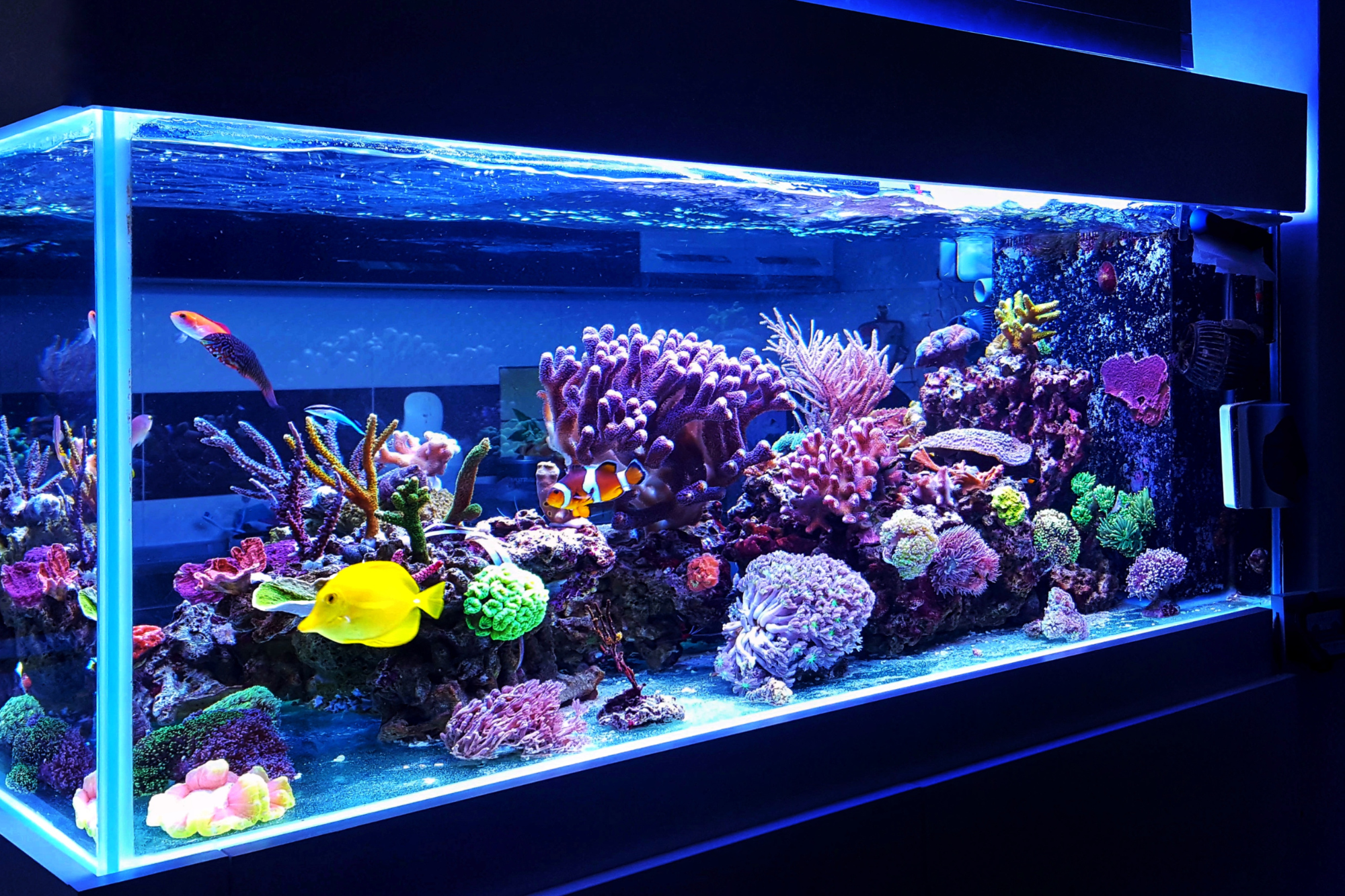
What type of vacuum cleaner to use for your aquarium:
There are 2 main types of vacuum cleaner on the market: manual and electric.
In both cases, they’re very easy to use. Choosing the best vacuum cleaner for your forum will depend not only on its size, but also on your budget.
So, if you have an aquarium with a total volume of less than 39 Gallons, we advise you to use a manual vacuum cleaner, which will be less expensive and easier to use.
We also advise you to check the length of the vacuum cleaner’s tube so that you can access the substrate.
Tips for using an aquarium vacuum cleaner :
Before using an aquarium vacuum cleaner, it’s essential to switch off any equipment that could be affected by water level variations, such as heaters or filters.
Be careful not to disturb live plants or delicate decorations when cleaning the substrate. It’s also important to choose a vacuum cleaner that matches the size of your aquarium. Indeed, it would be a shame to damage your entire décor each time you clean the nooks and crannies where waste is often deposited.
If you have a deep substrate bed, you may need to adjust the height of the siphon tube to avoid removing too much gravel or sand.
Regularly clean and rinse the aquarium vacuum cleaner after each use to avoid the build-up of debris or clogs.
How to choose the best aquarium vacuum cleaner for bottom cleaning?
There are many brands on the market offering products of varying quality. As in all fields, it’s not necessarily necessary to buy the most expensive products, thinking they’ll be the most efficient.
To help you, we have selected the best vacuum cleaners available on the Internet.
Our selection includes products with excellent customer reviews, as well as fast availability and delivery.
3 mistakes to avoid with your aquarium vacuum cleaner
Here are 3 mistakes to avoid, so as not to cause damage in your home, but also in your aquarium.
Our selection includes products with excellent customer reviews, as well as fast availability and delivery.
Sucking up too much sand
Many aquarists tend to suck up a lot of sand when cleaning. This can lead to considerable financial costs at the end of the year.
Do not clean under decorations
Secondly, it’s common for aquarium fans to clean only the easy-to-reach areas. However, waste quickly accumulates under the decoration and at the back of the tank.
We advise you to take care of this and remove the decoration for a thorough cleaning.
Aspiration of a fish
Be careful when cleaning, as fish have a nasty tendency to be curious. It’s not uncommon to inadvertently suck in a fish. This can result in injury or even death to your favorite fish.
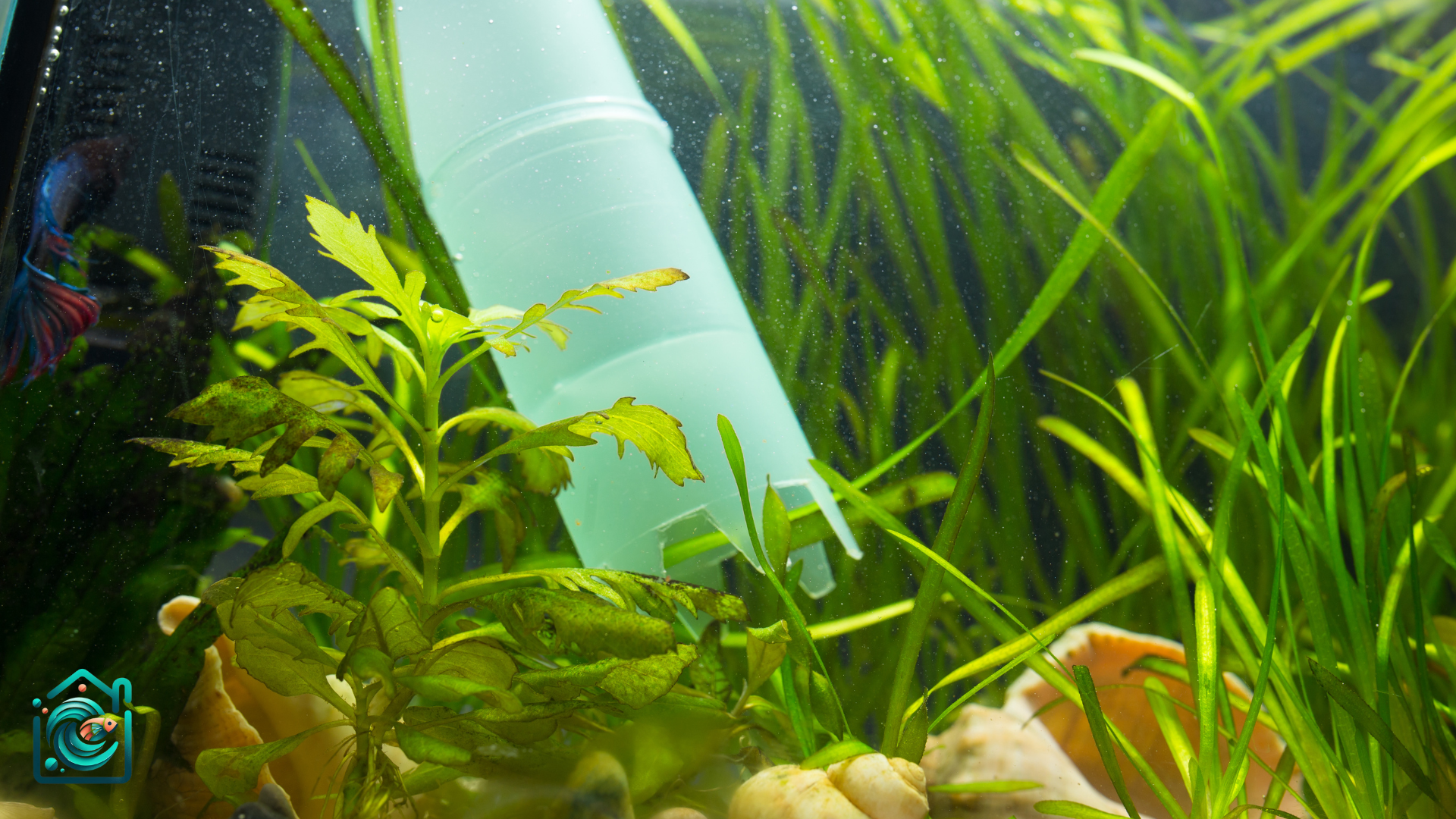
Best-selling aquarium vacuums on Amazon
Amazon has been the undisputed leader in e-commerce for several years now. That’s why we thought it would be a good idea to present you with the 6 best aquarium vacuums available on this site.
If you’re a premium subscriber, you’ll be able to get fast, free delivery so you can use your vacuum cleaner quickly and keep your aquarium clean.
The 3 best electric aquarium vacuums
Electric vacuum cleaners are a very practical everyday product. All you have to do is plug it into a mains socket and the filtration system will start automatically.
All you have to do is learn to hold the vacuum cleaner in your hands and move it to the areas you want to clean. The rest will happen automatically.
To help you in your choice of electric vacuum cleaners, here’s a selection of the 3 best products available on the Internet. Once again, to make things easier for you, we’ve selected only products with excellent satisfaction and immediate availability.
How to clean the bottom of an aquarium without a vacuum cleaner
If you don’t want to use an aquarium vacuum cleaner, we’ve come up with a really simple strategy.
You’ll need a hose of varying length, depending on the height of your aquarium. The principle is that of communicating vessels.
Take one end and plunge it into the bottom of your aquarium. The other end is in your hands, and all you have to do is put the hose in your mouth and breathe in for a few seconds.
You’ll see water rising up the pipe. Simply use a bucket to pour it back out.
Then, simply run the hose along the bottom of your aquarium to clean out the fine sand and remove any accumulated waste.
This ultra-simple technique requires you to suck up the water with your mouth, which can frighten some people. And yes, it’s not uncommon to drink the cup and swallow some of the water in your aquarium.
If this disgusts you, we advise you to use an aquarium vacuum cleaner to avoid this inconvenience.

